|
Help
|
|
Browse
|
Search
|
Create the page "Crape Myrtle" on this wiki!
 DescriptionCrape Myrtle flower.jpg English: Crape Myrtle flower Date 20 November 2023 Source Own work Author Lakshmipriya Pugal...(477 × 1,032 (101 KB)) - 01:11, 24 April 2024
DescriptionCrape Myrtle flower.jpg English: Crape Myrtle flower Date 20 November 2023 Source Own work Author Lakshmipriya Pugal...(477 × 1,032 (101 KB)) - 01:11, 24 April 2024 Crape Myrtle at Kisak's Cinnamon Hill I, the copyright holder of this work, hereby publish it under the following license: This file is licensed under...(1,024 × 768 (193 KB)) - 01:11, 24 April 2024
Crape Myrtle at Kisak's Cinnamon Hill I, the copyright holder of this work, hereby publish it under the following license: This file is licensed under...(1,024 × 768 (193 KB)) - 01:11, 24 April 2024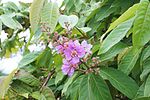 DescriptionLagerstroemia speciosa 03948.jpg English: Lagerstroemia speciosa Date 27 June 2016, 10:48:10 Source Own work Author Vengolis...(4,240 × 2,832 (7.78 MB)) - 11:46, 23 July 2022
DescriptionLagerstroemia speciosa 03948.jpg English: Lagerstroemia speciosa Date 27 June 2016, 10:48:10 Source Own work Author Vengolis...(4,240 × 2,832 (7.78 MB)) - 11:46, 23 July 2022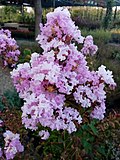 DescriptionLagerstroemia indica 5.jpg Türkçe: Oya ağacı çiçekleri. Date 27 July 2021 Source Own work Author Harald the Bard...(3,120 × 4,160 (3.1 MB)) - 01:29, 26 November 2022
DescriptionLagerstroemia indica 5.jpg Türkçe: Oya ağacı çiçekleri. Date 27 July 2021 Source Own work Author Harald the Bard...(3,120 × 4,160 (3.1 MB)) - 01:29, 26 November 2022 here. All following user names refer to en.wikipedia. 2007-03-18 01:36 HelloMojo 378×336×8 (36446 bytes) Lagerstroemia indica in authors garden English...(378 × 336 (36 KB)) - 00:12, 5 October 2020
here. All following user names refer to en.wikipedia. 2007-03-18 01:36 HelloMojo 378×336×8 (36446 bytes) Lagerstroemia indica in authors garden English...(378 × 336 (36 KB)) - 00:12, 5 October 2020 DescriptionCrepe Myrtle, Crape Myrtle 'Apalachee' (Lagerstroemia indica).jpg Crepe Myrtle, Crape Myrtle 'Apalachee' (Lagerstroemia indica) Source All...(487 × 352 (27 KB)) - 13:04, 24 April 2024
DescriptionCrepe Myrtle, Crape Myrtle 'Apalachee' (Lagerstroemia indica).jpg Crepe Myrtle, Crape Myrtle 'Apalachee' (Lagerstroemia indica) Source All...(487 × 352 (27 KB)) - 13:04, 24 April 2024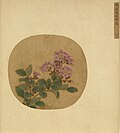 Wei Sheng: Crape Myrtle Sketched from Life Artist 衛昇 Title English: Crape Myrtle Sketched from Life 中文:寫生紫薇 Object type painting Date between circa...(1,350 × 1,500 (1.28 MB)) - 01:11, 24 April 2024
Wei Sheng: Crape Myrtle Sketched from Life Artist 衛昇 Title English: Crape Myrtle Sketched from Life 中文:寫生紫薇 Object type painting Date between circa...(1,350 × 1,500 (1.28 MB)) - 01:11, 24 April 2024
[printfriendly]
Lagerstroemia (/ˌleɪɡərˈstriːmiə/),[1] commonly known as crape myrtle[2][3] (also spelled crepe myrtle or crêpe myrtle), is a genus of around 50 species of deciduous and evergreen trees and shrubs native to the Indian subcontinent, southeast Asia, northern Australia, and other parts of Oceania, cultivated in warmer climates around the world. It is a member of the family Lythraceae, which is also known as the loosestrife family. The genus is named after Swedish merchant Magnus von Lagerström, a director of the Swedish East India Company, who supplied Carl Linnaeus with plants he collected. These flowering trees are beautifully colored and are often planted both privately and commercially as ornamentals.
Description
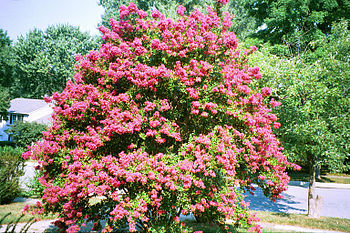
Crape myrtles are chiefly known for their colorful and long-lasting flowers, which occur in summer. Most species of Lagerstroemia have sinewy, fluted stems and branches with a mottled appearance that arises from having bark that sheds throughout the year. The leaves are opposite and simple, with entire margins, and vary from 5–20 cm (2–8 in). While all species are woody in nature, they can range in height from over 30 m (100 ft) to under 30 cm (1 ft); most, however, are small to medium, multiple-trunked trees and shrubs. The leaves of temperate species provide autumn color.
Flowers are borne in summer and autumn in panicles of crinkled flowers with a crêpe-like texture. Colors vary from deep purple to red to white, with almost every shade in between. Although no blue-flowered varieties exist, the flowers trend toward the blue end of the spectrum with no orange or yellow except in stamens and pistils. The fruit is a capsule, green and succulent at first, then ripening to dark brown or black dryness. It splits along six or seven lines, producing teeth much like those of the calyx, and releases numerous, small, winged seeds.
Taxonomy
Lagerstroemia species
- Lagerstroemia anhuiensis
- Lagerstroemia anisontera
- Lagerstroemia anisoptera
- Lagerstroemia balansae
- Lagerstroemia calyculata
- Lagerstroemia caudata
- Lagerstroemia cristata
- Lagerstroemia excelsa
- Lagerstroemia fauriei
- Lagerstroemia floribunda
- Lagerstroemia fordii
- Lagerstroemia glabra
- Lagerstroemia guilinensis
- Lagerstroemia indica
- Lagerstroemia intermedia
- Lagerstroemia langkawiensis
- Lagerstroemia limii
- Lagerstroemia loudonii
- Lagerstroemia micrantha
- Lagerstroemia microcarpa
- Lagerstroemia minuticarpa
- Lagerstroemia indica
- Lagerstroemia ovalifolia
- Lagerstroemia paniculata
- Lagerstroemia parviflora
- Lagerstroemia siamica
- Lagerstroemia speciosa
- Lagerstroemia stenopetala
- Lagerstroemia subcostata
- Lagerstroemia subsessilifolia
- Lagerstroemia suprareticulata
- Lagerstroemia tomentosa
- Lagerstroemia turbinata Koehne
- Lagerstroemia venusta
- Lagerstroemia villosa
Hybrids
- L. indica × L. fauriei – a hybrid originating in the U.S. National Arboretum's breeding programs of the mid-20th century
Ecology
Lagerstroemia species are used as food plants by the larvae of some Lepidoptera (moth and butterfly) species, including Endoclita malabaricus.
The leaves of L. parviflora are fed on by the Antheraea paphia moth, which produces the tassar silk, a form of wild silk of commercial importance in India.[4]
Crape myrtles are susceptible to several pests and diseases, most notably, fungus-caused powdery mildew,[5] and more recently, bark scale, caused by aphids leaving a black dark fungal infection in their wake.[6]
Uses
In their respective climates, both subtropical and tropical species are common in domestic and commercial landscapes. The timber of some species has been used to manufacture bridges, furniture, and railway sleepers,[7] but in Vietnam's Cát Tiên National Park, the dominant stands of Lagerstroemia calyculata in secondary forest are thought to have survived (after episodes of logging) due to the low quality of wood.[8]
Cultivation

Certain species of crape myrtle are used in landscaping and gardening as screens, lawn specimens, shrub borders, and container plants. Since crape myrtles are found in many places, opinions differ as to how to cultivate them in landscaping. Crape myrtles are best cultivated in warmer southern climates, U.S. zones 7–9, and prefer full sun. They occur in a variety of flowering colors and size.
Crape myrtles might have been considered messy in the past, but their seedpods cannot stain concrete, so are best planted near swimming pools, decks, and sidewalks.
The common crape myrtle (L. indica) from China and Korea was introduced c. 1790 to Charleston, South Carolina, in the United States, by French botanist André Michaux. In the wild, the species is most often found as a multiple-stemmed, large shrub, but 200 years of cultivation have resulted in a huge number of cultivars of widely varying characteristics. Today, crape myrtle varieties can fulfill many landscaping needs, from tidy street trees to dense barrier hedges to fast-growing dwarf types of less than 60 cm (2 ft), which can go from seed to bloom in a season (allowing gardeners in places where the plant is not winter-hardy to still enjoy the intense colors of the frilly flowers). In Europe, crape myrtle is common in the south of France, the Iberian Peninsula, and most of Italy; in the United States, it is an iconic plant of gardens across the Southern United States.[9] It has been cultivated in many parts of Australia, but is most common in the areas of the country with a Mediterranean climate such as the south-east and west.
While not as widely known, the Japanese crape myrtle, L. fauriei, from central and southern Japan, is becoming increasingly important, both as a landscaping plant and as a parent in complex hybrids with L. indica. This species is distinctly tree-like, with colorful, deciduous bark and dark green leaves, which are more resistant to fungal diseases than are those of its more popular relative. The Japanese name for this tree is saru suberi (猿滑、百日紅, literally "monkey slip", latter spelling ateji), which refers to the smooth, slippery bark. Flowers are as large as those of L. indica, but are white with only the slightest pink flush appearing in some individuals. Japanese crape myrtle is hardier to cold than many strains of L. indica, a characteristic (along with fungal resistance, tree form, and colorful bark) that makes it valuable as genetic material for hybridization. Cultivars available include 'Kiowa', 'Fantasy', and 'Townhouse'.[10]
L. speciosa, known as queen crape myrtle, giant crape myrtle, or banabá, originates in subtropical and tropical India. It can be grown in any similar climate, but in the United States is suitable only for Florida, southernmost Texas, South Louisiana, coastal southern California, and Hawaii. It is a large evergreen tree with colorful rosy-mauve flowers and striking white bark, suitable for public parks and avenues; only the seed-grown species is commonly available for sale, unlike L. indica and L. fauriei, which have dozens of cultivars.
-
Crape myrtle during summer in Sombrerete, Mexico
-
Same tree during fall
References
- ^ Sunset Western Garden Book, 1995:606–607
- ^ Merriam-Webster's Collegiate Dictionary (11th ed.)
- ^ Garner's Modern English Usage, 4th ed. 2016 Oxford University Press.
- ^ "Non-wood forest products In 15 countries of Tropical Asia". fao.org. Archived from the original on 18 April 2014. Retrieved 30 January 2012.
- ^ "5 Most Common Crepe Myrtle Problems - North American Tree Service". Tree Care | Snellville, Lawrenceville GA | North American Tree Service. 12 December 2019. Retrieved 2023-04-24.
- ^ "Bark Scale and the Crepe Myrtle: Understanding the Threat and How to Protect Your Trees". 23 April 2023. Retrieved 2023-04-24.
- ^ "Woodworkers Source: Pyinma". Archived from the original on 2019-09-28. Retrieved 2009-08-23.
- ^ Blanc, L.; Maury-Lechon, G.; Pascal, J.-P. (2000). "Structure, floristic composition and natural regeneration in the forests of Cat Tien National Park, Vietnam: an analysis of the successional trends". Journal of Biogeography. 27 (1): 141–157. Bibcode:2000JBiog..27..141B. doi:10.1046/j.1365-2699.2000.00347.x. ISSN 0305-0270.
- ^ Le Dem, Gaspard (2016-07-16). "It's Time To Appreciate D.C.'s Colorful Crape Myrtles". DCist. Archived from the original on 2019-08-11. Retrieved 2019-08-11.
- ^ "Trees: Lagerstroemia fauriei". www.ces.ncsu.edu. Archived from the original on November 23, 2007. Retrieved 2008-01-07.
Further reading
- "Lagerstroemia". Australian Plant Name Index (APNI), IBIS database. Centre for Plant Biodiversity Research, Australian Government.
- Flora, The Gardeners' Bible, ABC Publishing, Ultimo, NSW, Australia, 2006
External links
- . Collier's New Encyclopedia. 1921.



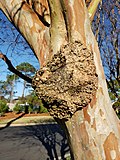
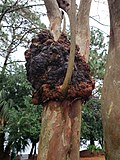
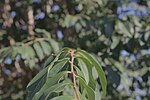


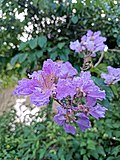






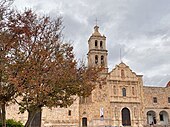

Recent Comments